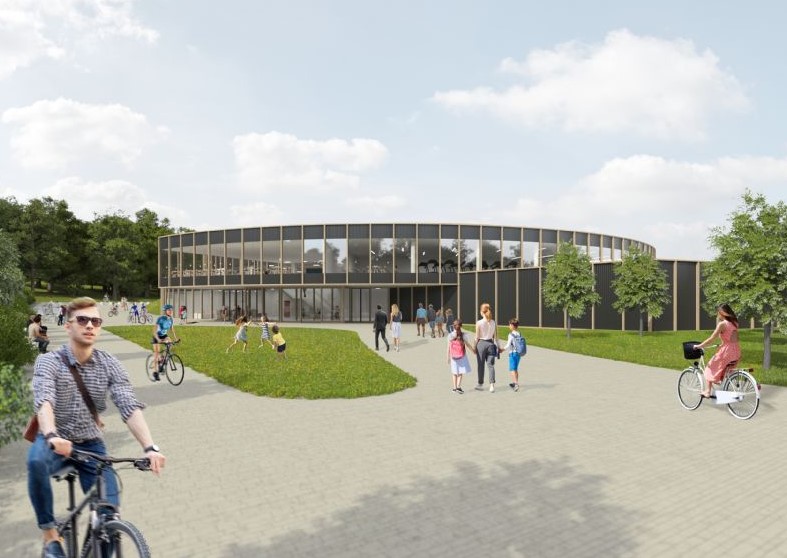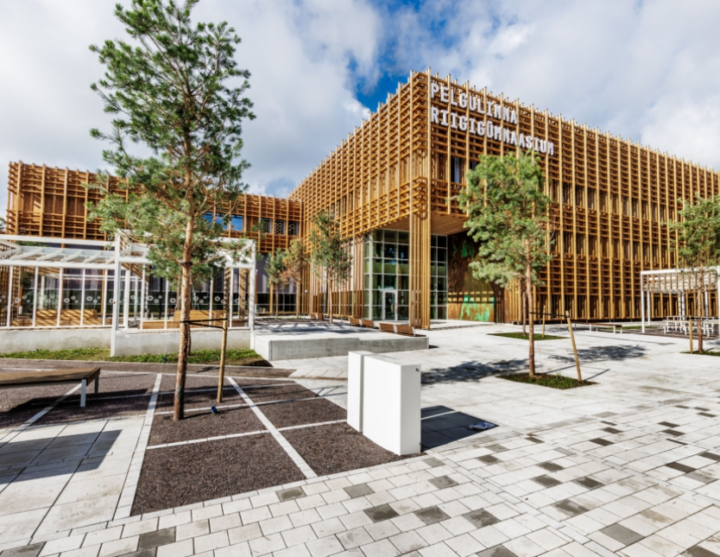How I use Simplebim: Houben NV’s BIM Coordinator on using Simplebim to optimise BIM processes
Whilst BIM adoption is undoubtedly increasing, key challenges still exist which prevent the methodology from being used to its fullest potential.
Belgian construction company Houben NV has been delivering commercial and domestic projects for almost a century. BIM is becoming increasingly important to the organisation’s forward-looking approach, helping to optimise the coordination of the works, improve collaboration with partners, and save time and resource by detecting errors and duplication.
BIM Coordinator Daniel De Ridder is one of a team of five BIM professionals servicing the project teams across the business. Describing the role as his “dream job”, De Ridder spoke to us about the “lightbulb moment” when he discovered Simplebim and how it has helped him to optimise BIM processes and better serve his project partners.

What challenges you were facing before adopting Simplebim?
Daniel De Ridder: One of the problems is that, as a contractor, we are always at the end of the line. The architect builds the models, but we only receive them when it’s time to start building. If they don’t build the model correctly, or if they don’t put in enough or correct information in to it, then we have a problem.
We want to standardise all our work so that we can optimise the work process, work faster and carry out more projects in BIM.
But the problem we used to find was every time we received IFC models they were different. The values of the parameters were in different places, or were not filled in. Our classifications stayed blank, making it difficult to communicate requirements to site staff.
Before adopting Simplebim, how did you manage your challenges?
DDR: Before Simplebim, the only thing we could do was put time into the model. If the model was going to be used on site, we spent time improving it.
Initially people would say, “But BIM is not good. BIM is only good if you do everything yourself.” But I refused to believe that. You have to encourage people to work to the same parameters and ask them to put the basic information into the model, so we can use it without losing too much time.
I was on a mission to educate those people. To let them see that the BIM is not just a beautiful 3D model but a building information model. To get that point you have to put in the information, the classifications, the property sets and data, from all the different elements of the building.
You are now using Simplebim to prepare models for different uses. How do you use Simplebim in your BIM workflow with other tools?
DDR: Firstly, I do a health check on the model in Solibri just to see what I have, what the values are, and whether they are correct. Once I have a general idea of the model, I can go to Simplebim to add the data that is missing.
I use Simplebim’s BIMsheet to correct values that are incorrect, make a new IFC and then I start my process again in another BIM tool preparing everything for the site.
You have added Simplebim in your BIM tool chain. How does it help you to optimise BIM processes?
DDR: First and foremost, it saves time.
Secondly, when I send the models to the site, I know they are good. Our project partners can use the application and the classifications because the data is complete. That’s very important.
So, when project partners want to combine, for example, the beams from level one with columns from level one, they can do it because the classifications are built in.
We have standard classifications, based on the SFB code and because I have a template in Simplebim that automatically puts the four-digit SFB code in the model, those classifications are complete.
Before I used Simplebim, it could take days to manually enter all the information required. Now, for the structural models, it takes four hours to create an enriched model that I can send to the site with all our classifications and details filled in. That’s a very big improvement.
Daniel De Ridder, BIM Coordinator, Houben NV
What are the other benefits of Simplebim?
DDR: The ability to enrich the data in the IFCs is key. We enrich the IFCs with our own property set. That’s the most important enrichment. We can also correct faulty values in our parameters. If we don’t do that, the other templates will not work.
Ultimately, we get an IFC with a lot of more information than we had before we started using Simplebim. The data is embedded in the IFC, so that means that our project partners see and can use that information.
The positive thing is that you can enrich the IFC and you can actually add the data to the IFC. That’s the difference between other BIM tools and Simplebim.
You have been using Simplebim for several years. Can you give us an example of a project where Simplebim’s enrichment capabilities have helped?

DDR: I worked on a project that included five blocks of four apartments and we received all the IFC models from structure, architecture, and MEP and we had a company in India that was going to produce all the models again in Revit.
However, I used Simplebim to enrich every model, so the people who were producing the Revit models could see the codes for all the elements in the building.
For example, if they were looking at a wall and the wall was classified as ‘2220’, they’d know it was an internal load-bearing wall because of the codes. I put all the information into the IFC models, so they could model it in the BIM modelling software.
How has Simplebim benefitted the wider organisation?
I have a better relationship with my project partners because thanks to Simplebim our projects run faster and smoother.
Daniel De Ridder, BIM Coordinator, Houben NV
DDR: As I mentioned earlier, we have a problem in the industry that often the IFCs we receive are not good enough to work with. Companies then try to solve that problem by beginning from zero again. So, they rebuild the whole model in their software. As a small team of five, it’s just not possible for us to work like that.
Now when we work with the project partner, who is going to make a new model from scratch for us, we give them as much information as we can in the IFC models – such as the SFB code, the proper name for the material, all those things need to be correct in the model and Simplebim makes this process so much easier.
What are your favourite Simplebim features?
DDR: I like the fact that you can run a tool in Simplebim, that can automatically extract duplicate elements.
Also, I use Simplebim’s BIMsheet to correct the faulty parameters. It saves so much time. I just love it.
With Simplebim it’s much easier to help coordinate the IFC models. It can show the information, the communication, and the clashes. Using Simplebim has made my job a dream.
Daniel De Ridder, BIM Coordinator, Houben NV
What advice would you give to others who are facing resistance to using BIM?
DDR: Show them how they can use Simplebim to enrich IFCs with basic information standards, and how having all the right information in the IFC models enables them to benefit from the full BIM process.
It’s not about starting at 2D model and using a tool to make an IFC in 3D, because that model won’t have enough information in it to maximise the full BIM process.
Are you a BIM professional looking for a time and resource-saving tool to optimise BIM processes and better serve project partners? Get in touch with the team here at Simplebim and we’ll show you a demo.


